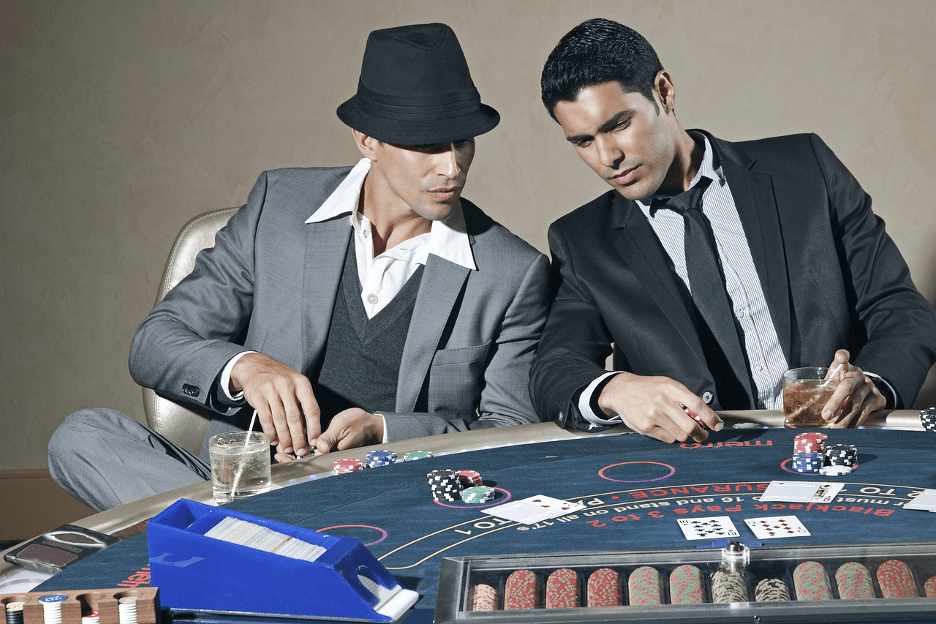High-stakes blackjack is no longer confined to doubling on eleven. Today’s buzz tables reward seven-card 21s and six-card totals and even grant late surrender after splitting, upending conventional wisdom.
These modifications tighten the house edge for well-prepared players and punish outdated strategies. Our first stop is Super Fun 21, where bonus payouts for extended hands turn extra cards into valuable assets.
Switch Blackjack
In Switch Blackjack, each player receives two hands and gets to swap the top cards between them. That simple exchange reshapes strategy in a hurry. Imagine flipping a stiff 16 into a strong 18 with a quick trade. Suddenly, splitting, doubling, and even the timing of a blackjack surrender demand recalibration.
But house rules counterbalance this perk. Blackjack pays even money, and a dealer total of twenty-three pushes against all player hands except a natural.
This twist injects a fresh layer of decision-making. You’re not just reacting to the dealer up-card. You’re anticipating how your swapped hands will fare post-hit or whether conceding and surrendering is better.
Seasoned card counters will note that the double-deck shoe and forced reshuffle after a cut card amplify advantage-play potential. But be wary, aggressive hitters sometimes overtrade, forgetting that a swap gone wrong can derail an otherwise solid hand.
Mastering Switch Blackjack means developing a feel for when to hold tight, when to swap, and when that tactical surrender is worth the cut in losses.
Double Exposure Blackjack
What if you peeked under the dealer’s sleeves before committing chips? That’s Double Exposure Blackjack for you.
In this variant, both of the dealer’s cards lie face up. No more guessing whether you’re up against a stiff undercard or a lurking ace.
With complete information, players enjoy unprecedented clarity, yet the house retains its grip through subtle rule shifts. A dealer twenty-two results in a push against all player hands, and Blackjacks pay only even money.
Additionally, doubling down restrictions tend to tighten; some tables forbid a mid-game double after splits. These offsets keep the house edge in check, but the psychological advantage remains yours.
Spotting a hard 20 versus the dealer’s 14 changes the game’s pace. You can split confidently, knowing the dealer’s stamina, and even see when surrender makes sense. For those who thrive on logical play rather than gut instinct, Double Exposure delivers an analytical playground where every decision feels laser-focused.
Super Fun 21
Super Fun 21 flips traditional blackjack on its head by offering player-leaning rules that reward aggression. Here, a dealer hitting soft seventeens is standard, but players benefit from late surrender options even on double downs.
Five-card 21s always win, and six-card or seven-card totals pay bonus odds. Better yet, if your seven-card hand totals exactly twenty-one, you walk away with a higher payout than a standard blackjack.
These features inject an addictive push-pull between risk and reward. The house edge tightens compared to classic blackjack, but only if you harness the variant’s quirks. Splitting tens against an open dealer ace can be profitable when combined with bonus payouts.
That said, ignoring the higher dealer hit requirement on soft hands can nullify your edge. Players must adjust their basic strategy chart to factor in extra surrender windows and bonus triggers. When executed correctly, Super Fun 21 feels less like a gamble and more like an optimized engine for compounded excitement.
Progressive Jackpot Blackjack
A progressive jackpot side bet elevates ordinary blackjack into a potential life-changer. When you place the side wager, you contribute to a growing prize pool reaching six-figure sums.
Payouts kick in for rare poker-style hands: a suited blackjack, a royal flush on the first two cards, or even specific three-card sequences. Suddenly, your initial $1 or $5 side bet could pay tens of thousands. Yet, the odds of hitting that top jackpot often sit in the millions-to-one, underscoring how rare these payouts are.
But this dream can come with a steep price. Progressive side bets often raise the house edge by several percentage points, so disciplined bankroll management becomes crucial.
Savvy players balance a modest side wager with standard play, aiming for jackpot potential without sacrificing their core strategy. Some casinos cap contributions based on table limits, triggering frequent resets at lower thresholds.
Tracking shoe penetration and observing side bet frequency offers insight into optimal contribution timing. Armed with this data, you can decide whether to chase the jackpot or stick to traditional twenty-one.
Beyond the Basic Hit-or-Stand
If every session feels too familiar, it’s time to explore variants that demand more than rote charts. Trading cards, full-hand visibility, bonus-driven payouts, and jackpots completely reshape your decision trees. Each rule shift adds a tactical wrinkle. So, don’t just play, analyze. Keep experimenting, and you’ll find which twist becomes your new go-to for maximizing excitement and value.


 Michaels Vincentuza – Founder & Chief Editor
Michaels Vincentuza is the driving force behind Gamble Wise Roll, a platform committed to delivering insightful and responsible coverage of the gambling industry. With a deep passion for gaming and years of experience in the field, Michaels founded the site to bridge the gap between industry professionals and everyday players, offering news, expert analysis, and ethical guidance. His expertise spans across various aspects of gambling, from traditional casino strategies to skill-based betting and the future of gaming innovations. Under his leadership, Gamble Wise Roll has become a trusted source for those seeking balanced, well-researched perspectives on the industry’s latest developments. Michaels remains dedicated to promoting responsible gambling while exploring the evolving intersection between gaming, technology, and entertainment.
Michaels Vincentuza – Founder & Chief Editor
Michaels Vincentuza is the driving force behind Gamble Wise Roll, a platform committed to delivering insightful and responsible coverage of the gambling industry. With a deep passion for gaming and years of experience in the field, Michaels founded the site to bridge the gap between industry professionals and everyday players, offering news, expert analysis, and ethical guidance. His expertise spans across various aspects of gambling, from traditional casino strategies to skill-based betting and the future of gaming innovations. Under his leadership, Gamble Wise Roll has become a trusted source for those seeking balanced, well-researched perspectives on the industry’s latest developments. Michaels remains dedicated to promoting responsible gambling while exploring the evolving intersection between gaming, technology, and entertainment.
